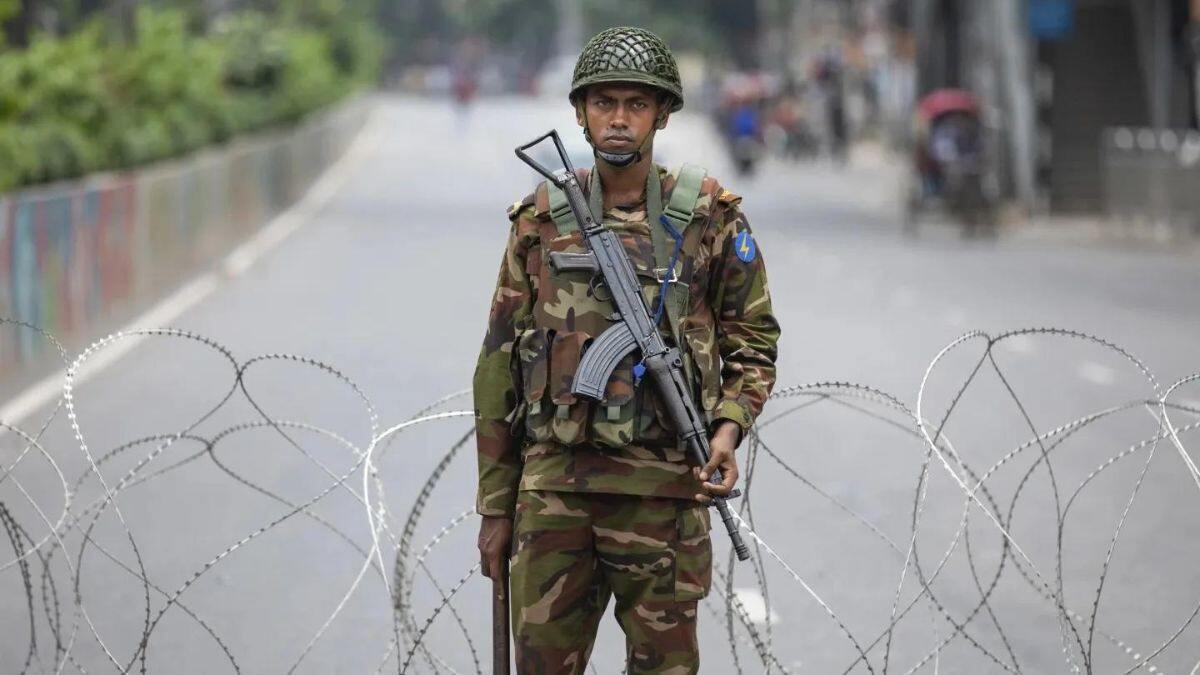As Bangladesh continues to face ongoing protests and the recent declaration by Army Chief Waker-uz-Zaman that Sheikh Hasina has resigned as Prime Minister, it's crucial to reflect on the nation's evolution since gaining independence in 1971its 1971 independence. From the initial uprising in August 1975 to the most recent attempt in December 2011, Bangladesh has witnessed 29 military coups, illustrating a turbulent history marked by repeated upheavals and shifting power dynamics.
ALSO READ| List of Most Powerful Military Forces in the World 2024
List of Major Military coups in Bangladesh
As mentioned above, there have been as many as 29 military coups in the history of Bangladesh, some successful and some not. Here is a list of major military coups that that have occurred in Bangladesh:
| Date | Event | Details |
| 15 August 1975 | Assassination of Sheikh Mujibur Rahman | A military coup was launched by mid-ranking army officers to replace Sheikh Mujibur Rahman with Khandaker Mushtaque Ahmed. Sheikh Mujib and most of his family were killed. |
| 3 November 1975 | Removal of Khondaker Mostaq Ahmad | Brigadier Khaled Mosharraf organized a coup to remove Khondaker Mostaq Ahmad from power. |
| 7 November 1975 | A coup by left-wing army personnel | Left-wing army personnel and politicians from Jatiya Samajtantrik Dal launched a coup, killing Khaled Mosharraf and freeing Ziaur Rahman. |
| 30 September - 2 October 1977 | Failed coup attempts | Multiple assassination attempts on Ziaur Rahman, including incidents initiated by the hijacking of JAL flight 472. |
| 30 May 1981 | Assassination of Ziaur Rahman | Ziaur Rahman was assassinated in Chittagong by army officers. |
| 24 March 1982 | A coup by Hussain Muhammad Ershad | Ershad removed President Sattar from office, proclaimed himself Chief Martial Law Administrator, and suspended the constitution. |
| 19 May 1996 | A coup attempt by Lt. Gen. Abu Saleh Mohammad Nasim | Nasim staged an abortive coup against the Caretaker government but was arrested and later granted formal retirement. |
| 11 January 2007 | Military coup by Lt. Gen Moeen U. Ahmed | Army Chief staged a coup forming a military-backed Caretaker Government, which ended in 2008 after elections. |
| 25-26 February 2009 | Bangladesh Rifles revolt | Mutiny by Bangladesh Rifles resulting in the deaths of BDR Director-General, 56 other army officers, and 17 civilians. |
| 11-12 January 2012 | Foiled coup attempt | The coup was planned to establish Islamic law in Bangladesh but was stopped by the Bangladesh Army. |
In conclusion, Bangladesh's history is marked by a series of tumultuous coups, each shaping its political landscape. From the 1975 coups that saw the fall of Sheikh Mujibur Rahman and the rise of Khandaker Mushtaque Ahmed, to the violent 2009 Bangladesh Rifles revolt, and the 2011 coup attempt, these events reflect ongoing struggles over governance and power. Each coup and attempt underscores the complex interplay of military, political, and social forces in shaping Bangladesh's modern history.
Major Military coups in Bangladesh
On Monday, the resignation of Bangladesh's Prime Minister Sheikh Hasina, announced by the army chief in a televised address, thrust the country once more into the world spotlight for its turbulent history of political instability and military coups.
In 1975, their first prime minister, Sheikh Mujibur Rahman--Hasina's father--was assassinated along with most of his family in a military coup, which ushered in a long period of military rule. The same year also saw two more coups that culminated in General Ziaur Rahman seizing power in November.
On May 30, 1981, Rahman was murdered by rebels who stormed a government guest house in Chittagong where he was staying. Although this violence was carried out by only a few army officers, the majority of the army remained loyal and quelled the rebellion.
In November 1982, Rahman's successor Abdus Sattar was overthrown in a bloodless coup led by Hussain Muhammad Ershad, who took over as chief martial-law administrator and later assumed the presidency.
In 2007, the army staged yet another coup that backed the caretaker government that ruled until Hasina took power in 2009.

The next year, discontented paramilitary forces, unhappy with their wages and living conditions in Dhaka, revolted and killed over 70 people, mostly army officers. The mutiny, which spread to almost a dozen cities, ended after six days when the rebelling guards surrendered following negotiations.
Hundreds of people gathered on Dhaka's parliament grounds after Prime Minister Hasina resigned and fled to a safe house in India on Monday.
When the Bangladesh army said that it had thwarted a coup attempt in 2012, the army chief reported that it was the work of retired and serving officers driven by what they called a campaign to introduce Sharia law- that is, Islamic law- throughout the country.
In 2024 General Waker-Uz-Zaman, Army Chief of Staff, announced the resignation of Prime Minister Hasina in the face of violent anti-quota demonstrations, saying that an interim government would be formed to lead the nation.
ALSO READ| List of World’s Most Powerful Passports in 2023 | World's Strongest Passports
ALSO READ| Top 10 Most Peaceful Countries In Europe, Check Full List Here!
ALSO READ| 10 Hardest Countries to Get Citizenship in the World 2023
Comments
All Comments (0)
Join the conversation